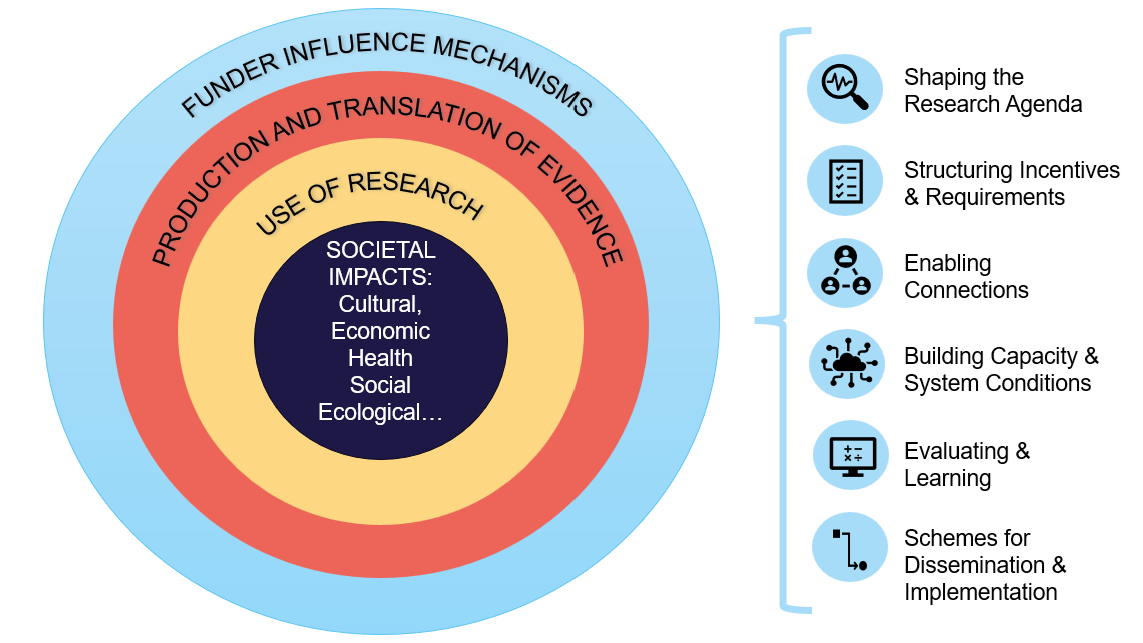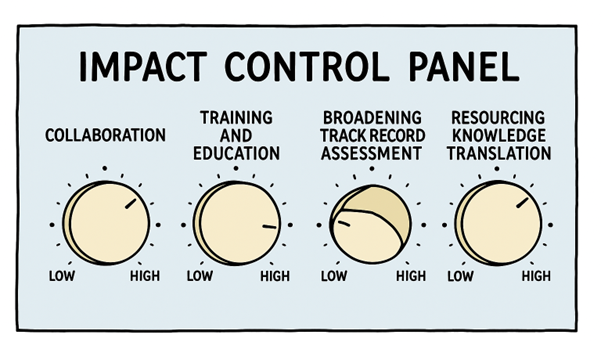By Professor Melinda Craike and Dr Bo Klepac, Victoria University, Melbourne Australia
Every year, research funders invest billions of dollars – but how much of that research actually makes a difference?
The actions funders take, both intentional and unintentional, have the potential to shape how research is conceived, conducted, and connected to the world beyond academia. In other words, they can influence things like who is part of the research, what research questions are asked, and how research findings are applied in practice. Those actions hold ‘hidden power’ and can make the difference between research that has or doesn’t have societal impact.
Research doesn’t exist in isolation. It is part of an evidence ecosystem, a system that includes researchers, funders, policymakers, practitioners, and communities. A well-functioning evidence ecosystem is one where relevant evidence is generated, interpreted, and applied to guide decision-making. When the system is supportive and aligned, research translates into action, benefiting the public. When it isn’t, opportunities for societal impact are lost.
Funders are key actors in the evidence ecosystem. They are more than financiers: through their design choices and expectations, they can help shape how research is conceived, conducted, and connected to the world beyond academia. In other words, funders are enablers of societal impact. Funders are increasingly using mechanisms like convening stakeholders, resourcing knowledge translation activities and building researcher and system capacity to maximise the impact of their investments.
Funder influence mechanisms are strategies, design choices, and operational levers that funders use to shape the production, translation, and use of research.

Figure 1: Funders don’t just decide what gets researched; they also shape how research is conducted, translated, and used. These influence mechanisms, from setting agendas to supporting dissemination, can play a powerful role in determining whether research has a societal impact.
We conducted a preliminary examination of the literature to start to get an idea of which funder influence mechanisms are linked to societal impact. This can help us to understand which ones make a difference when it comes to societal impact. We found it challenging to identify promising mechanisms because there is no shared language for describing funder influence mechanisms, which makes it hard to compare and group findings.
We identified several promising mechanisms:
> Engaging in stakeholder engaged priority setting
> Encouraging or mandating stakeholder involvement
> Broadening project assessment criteria of “quality research” to include pragmatic study designs
> Requiring Knowledge translation plans/impact planning at the proposal stage
> Resourcing knowledge translation activities
> Training, education and access (researchers, brokers, knowledge users)
> Broadening track record assessment criteria beyond research skills to include things like collaboration and communication with non-academic audiences
Importantly, this examination was not systematic, and a more thorough review is necessary to accurately identify promising influence mechanisms and gaps in what we know. A review of funder influence mechanisms is needed for:
- Learning and accountability – Funders invest vast resources in research and mechanisms to support impact, so we need to understand whether and how these mechanisms might lead to societal impact.
- Evidence-informed strategy – Without robust evidence, the influence mechanisms used by funders risk being driven by tradition, assumptions, or political pressure rather than evidence.
- Maximising impact potential – Impact is complex and non-linear. By intentionally designing for impact, funders can amplify their impact far beyond individual projects, thereby strengthening the entire evidence ecosystem.
Examining funder influence mechanisms shifts the question from “Did this research have societal impact?” to “How did our funder influence mechanisms enable or constrain societal impact?”

Illustration 1. Funders have an ‘impact control panel’ with dials they can turn up or down. Each knob represents one influence mechanism and the ‘hidden power’ they hold. Image designed using ChatGPT.
Funders are more than financiers: they are key actors in the evidence ecosystem.
Funder influence mechanisms matter: they have the potential to shape how evidence is produced, translated, and used.
A review of existing evidence of funder influence mechanisms is needed to identify (1) which mechanisms are linked to societal impact; and (2) where we need new research on promising funder mechanisms.
Without reviewing the evidence and understanding the effectiveness of funder influence mechanisms, resources could be wasted on mechanisms that are not effective in supporting societal impact.
If we want research to have a societal impact, funding must be designed with that goal in mind. We invite funders, policymakers, practitioners, and researchers to:
Together, we can harness the ‘hidden power’ of funders into a force for societal impact, ensuring that every dollar invested in research has the best chance of making a real difference.